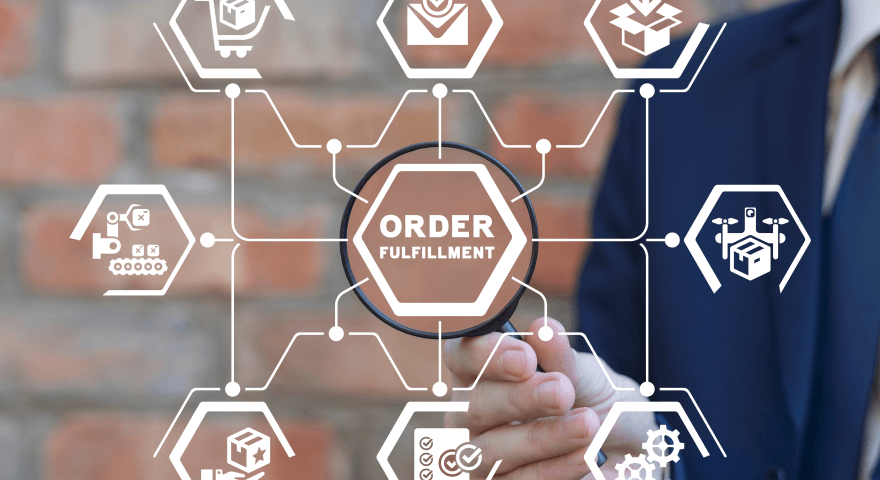Join Dr. Christoph Kilger and Dr. Boris Reuter as they discuss the supply chain performance gap, and where you can start closing it. Most businesses collect large amounts of data, yet supply chain analytics doesn't always translate into concrete measures that are executed. How can you start digital execution management that leads to real results?
TRANSCRIPT
Christoph: Today, we're discussing closed-loop supply chain performance management, and our goal is to explain what this beast means. The starting point is understanding that decisions in supply chains need to be fact-based, and for that, we need to understand what's going on in a supply chain. That's why supply chain analytics systems have been introduced. Then, there are supply chain planning systems that support optimization based on these facts. What's lacking is digital representation and support for executing the decisions that come out of these processes. This is today's topic: how does this bring us to closed-loop supply chain performance management.
Boris: Yes! The first step to achieving this is to understand what's going on in your supply chain. This means understanding and analyzing the actual situation in the supply chain to gain end-to-end transparency. This gives us the chance to identify where the real improvement areas are from a holistic point of view.
So what are the critical problems that we're facing here? And why are we talking about end-to-end? Because supply chains are such complex structures, we need to understand that some of the symptoms you observe may have the root cause in other areas. They might come from a different process, function, or hierarchy level in your organization.
Christoph: And it has to do with a lot of data. Supply chains are complex, ranging from the suppliers and the products they provide into production, logistics, distribution, and customers' hands. To understand what is going on there, we need explorative analytics. We need possibilities to cut through the data and look at the data, a subset of the data, or a specific context from different perspectives.
For instance, we might want to look from a finance perspective and look at the revenue we are currently making in certain product groups. Or: what is the value of inventory we have on hand? Then, we may want to switch to a different perspective, like logistics, and ask: what is the period of cover? And then again, another perspective: what does it mean for sales to risk a stock-out situation. And this explorative way is essential to make what happens in a supply chain visible and transparent.
Boris: From an analytics viewpoint, this means there are different levels to address. Typically, you start at a bird's eye view where you analyze many different KPIs at a high level. These give you a good overview and hopefully give you some insights into your real problem areas.
Coming back to your example on inventory coverage, usually, you would find that if you analyze working capital, one part of the working capital analysis is coping with inventories, days of inventories owned, and coverage, for example. If you see a large number for days of inventory, you know you need an analysis there. Digging into the details from a supply chain perspective, you classify the inventory into different coverage classes: fast-moving, slow-moving, or even non-moving. Non-moving drives this high number, and you would have to dig further to understand what's behind it.
For example, you may switch perspective for the slow-movers and analyze it from sales and consumption. Products that are very stable but have a very high coverage that directly resonates with you from a supply chain perspective show us there's an improvement potential. This is a real finding.
Let's look at a different example that is rooted in actuality: the problem of availability. In many different markets, we analyze availability issues, such as the number of stock-outs or on-time-in-full. It is vital to understand where this comes from and understand the bottlenecks on the supplier side. For example, your factories or suppliers are not able to deliver. This may be a finding from your analysis, and the next step is to do something to tackle precisely this problem.
Christoph: Absolutely! Availability is a very contemporary problem. Think of the ship in the Suez Canal, where 400 ships were waiting to pass through in both directions. This, along with the COVID-19 crisis, leads to logistics containers piling up in one place and not coming back in the other direction.
We need a deep dive into the data to make these findings explicit and learn what is causing our availability issues. We need concrete cases to back this up – with explicit findings. What I envision: in a couple of years, we will be able to do about 80% of the analytics fully automated. This will empower supply chain analytics.
Boris: This is enabled by the data on supply chains we're accumulating and the technology that supports us. This brings us to a new phase: we have made the findings explicit, based on thorough analysis, and we've learned about the root causes of our issues. The next step is deriving a recommendation for the right measure.
Christoph: Which isn't always straightforward. Sometimes it is a mathematical problem to get to an optimized inventory set up from the data. We need the right parameters and understand how we can improve the forecast based on what we have today. We need the right IT infrastructure and systems to support us with that. This is where supply chain planning systems like o9, Blue Yonder, and SAP, or tailor-made algorithms like AIOintelligence, can play a role.
Boris: Algorithms like AIOintelligence can help us do two things. Firstly, support people in more automated decision-making. An algorithm can do all the mathematics required for these recommendations. Secondly, it can provide us with a more realistic target-setting. For instance, people are dreaming of a forecast accuracy of 100%. Standard algorithms, like, for example, time-series algorithms, can get you something like 50 to 60%. The more advanced algorithms add another 10 to 15%. This is something to keep in mind: set targets that are realistic. If you carry out measures with unrealistic targets, people will not reach them, and inevitably frustration will start to build. And this is how strategy execution fails.
Christoph: Not to mention that increasing a 50% forecast accuracy by 10-15% is excellent. If we can achieve this, it would mean a great benefit for a company's entire supply chain. Tailored algorithms can play an important role in reaching this because they allow us to achieve results like that without the need for a lot of system implementation, customization, etc. When we look at the implementation of a full planning system, this takes about a year. A tailored algorithm can reach this within one to two months.
Boris: Now that we've tackled analytics and decision-making systems, we've learned the what and why of our supply chain. We've learned how to solve it. So what's left is the execution of these decisions. This is where it gets tough and where most businesses fail. We need a digital environment where we can track these recommendations from our decision-making system, and see the results and progress of these initiatives.
Christoph: What we've learned here is that it's important in these digital systems to keep a connection to the actual objects in the supply chain. An object, in this case, could be a supplier or its materials, or it could be materials and their warehouse location. Together with their activity plans, measures, and initiatives, all these objects allow us to derive the current status of the execution process and the possibilities for optimization.
Boris: Another complication in executing these improvement initiatives is that people often start from scratch and don't necessarily have the experience. That's why it's important to provide them the digital model and fill it with a library of content that supports them in executing their measures. This library is a compilation of predefined measures that help form an action-based perspective that allows for execution in an aligned way.
Imagine a large multinational starting, for example, an initiative to get rid of slow-movers or improve global availability. Alignment is essential throughout the organization if you want to roll this out successfully. It's necessary to stick to a process. This process can be based on leading practice, corporate standards, or learnings from the past. Processes like these are embedded into the library of measures. When you then run a measure, it allows you to track how specific actions are completed, and you can see at an early stage what the roadblocks are, and if they are caused by specific actions not being executed, for instance, because the right documentation is missing.
Back to our earlier example: when we start measures for forecast accuracy, we quickly see that a typical behavior is that specific locations start gaming. This means they increase the forecast dramatically to get a share of this to fulfill their demand. If you see this happening and want to avoid this, you should adjust your allocation process towards a different role – no longer use a forecast accuracy-based algorithm.
Christoph: I think we've covered all the ingredients: from the analytics systems, symptoms we witness and their correlated objects, optimization and recommendations on improvement, and on to execution. This is what our platform does: we bring together measures and initiatives with a library of best practices from the past. All of this tracked along digital object twins coming directly from the analytics system. This allows us to update on the current status continuously, for instance, on new inventory levels. This allows us to learn and see whether our actions were successful and got us the benefits we wanted. Over time, we will continue to learn from repeating these programs and understand what measures pack the most impact in what situations. This calibrates what we call closed-loop supply chain performance management.
Boris: Summing it up from our side, we see that most organizatons already manage this well for analytics and optimized decision-making. What's missing is a truly digitalized process to follow up on these decisions: they are often kept in Excel sheets or emails. We need a digital model for the entire closed-loop supply chain performance management process – from analytics to optimization, to generating actual impact and learning from these actions.
Christoph: The target being high-performing supply chains!





.jpg)



.png)
